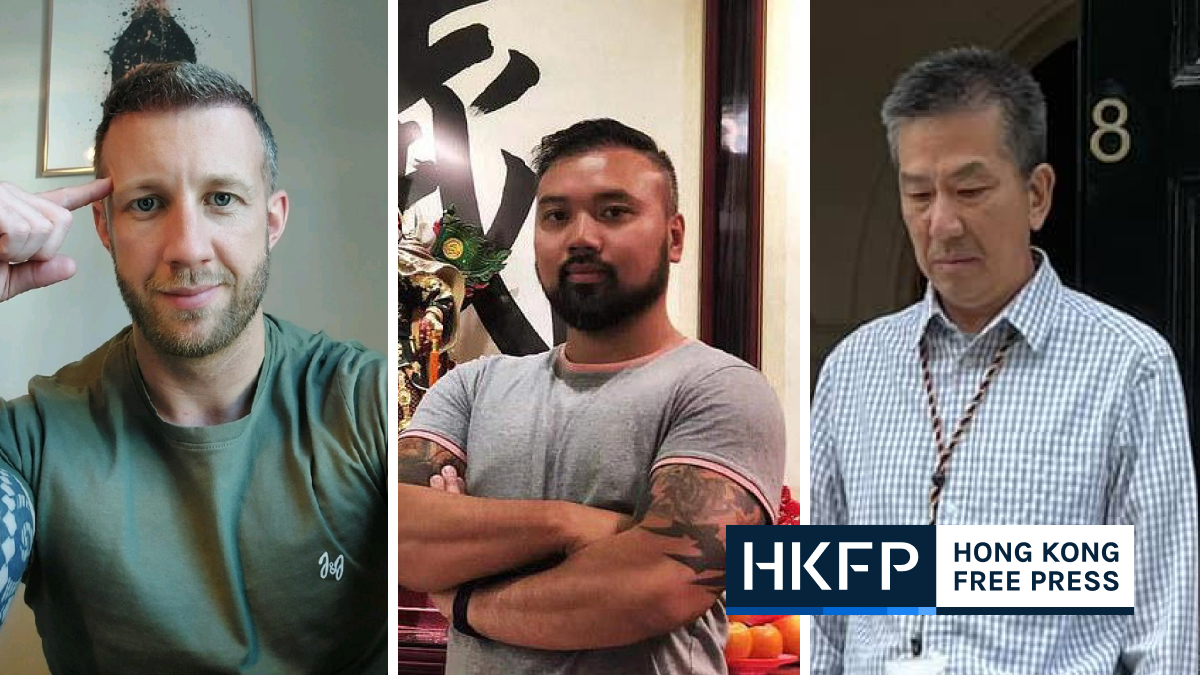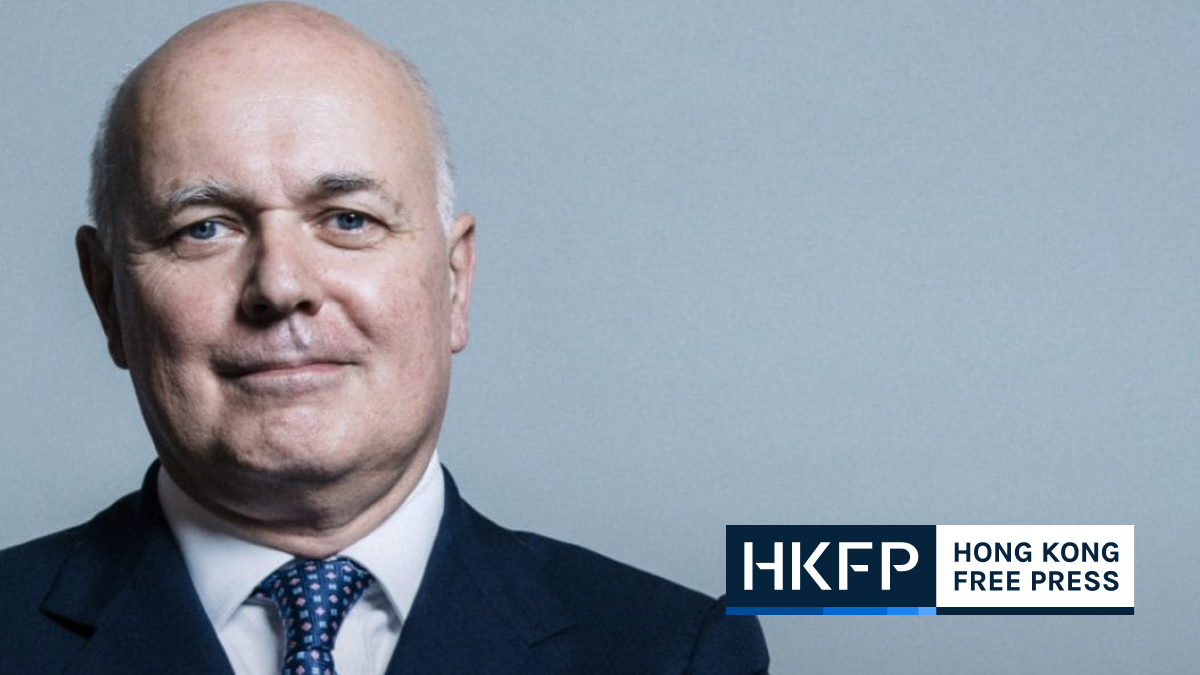When French documentary photographer Patrick Wack agreed to share his images of China’s Xinjiang region with Eastman Kodak’s 839,000 Instagram followers in mid-July, he was totally unprepared for the social media storm that followed.
The series of ten images were of everyday and seemingly innocuous scenes from the region’s cities and deserts. They were released to promote his upcoming book, Dust, a compilation of images from two separate Xinjiang photography projects in 2016-17 and 2019 to show the region’s evolution over the space of four years.

One featured a Uyghur man standing in a sliver of sunlight, looking out a doorway onto a dried-up lake in Turpan. He wears a Taqiyah, a traditional Muslim skullcap.
But it was not the photographs themselves that prompted an outcry from angry Chinese netizens, but the post’s description.
“This second reportage aimed at documenting life under acute repression among the Uyghur minority alongside the disturbing simultaneous increase of Han-Chinese tourism in the region,” Wack’s text beneath the images read.
The post drew over 40,000 likes but also the anger of Chinese netizens. In response, Kodak deleted Wack’s content from its Instagram page, apologising for “any misunderstanding or offense the post may have caused.”

In a separate statement posted to China’s social media platform WeChat, the company vowed to “continue to respect the Chinese government” and “keep itself in check.”
“It’s disappointing, especially when it comes from a company like this, which has been for a hundred years one of the main traders in the photography industry and prides itself on helping people record important events. I think that’s what upsetting most people,” said Wack, 42, of Kodak’s removal of his images.
The company’s motto is “Enabling creativity since 1880.”

“Once they made the post, even if they were harassed by Chinese trolls… they should have stayed with it,” he continued. “It was starting to get ugly for them and that’s why they panicked. They didn’t see that they were actually going to unleash something even worse by doing this.”
Following its statement in late July, Kodak’s Instagram accounts saw a stream of comments accusing the company of “censoring art” and of “suppressing the truth.” The company has since disabled comments on its recent posts.
Kodak has not replied to HKFP’s request for comment.
‘Just Instagram’
Since Kodak’s controversial move, Wack has received an outpouring of support from strangers online and a uptick of interest in his work. “I wouldn’t know who Patrick Wack was until Kodak’s statement. Thanks for letting me know!” one comment read.
Before Kodak’s removal of his content, Wack’s posts on his own Instagram page received on average hundreds of likes. Now his images of Xinjiang have reached close to 2,500.

The photographer, however, is conflicted. Although grateful for the support, he feels his work has been overshadowed by the outcry. “I wish all of this was because of my work or my book, but it’s all because of a Kodak Instagram post,” he said.
The size of the backlash against Kodak also obscures the nuances of his images, he said.
“It’s not like I had images of Uyghur people in camps, or Uyghur people being rounded up. I don’t have those images. I think that’s also part of the issue. You need to be more subtle to understand the images, the fact that you can’t photograph these events there.”
“I photographed the evolution of the region, I photographed the atmosphere.”
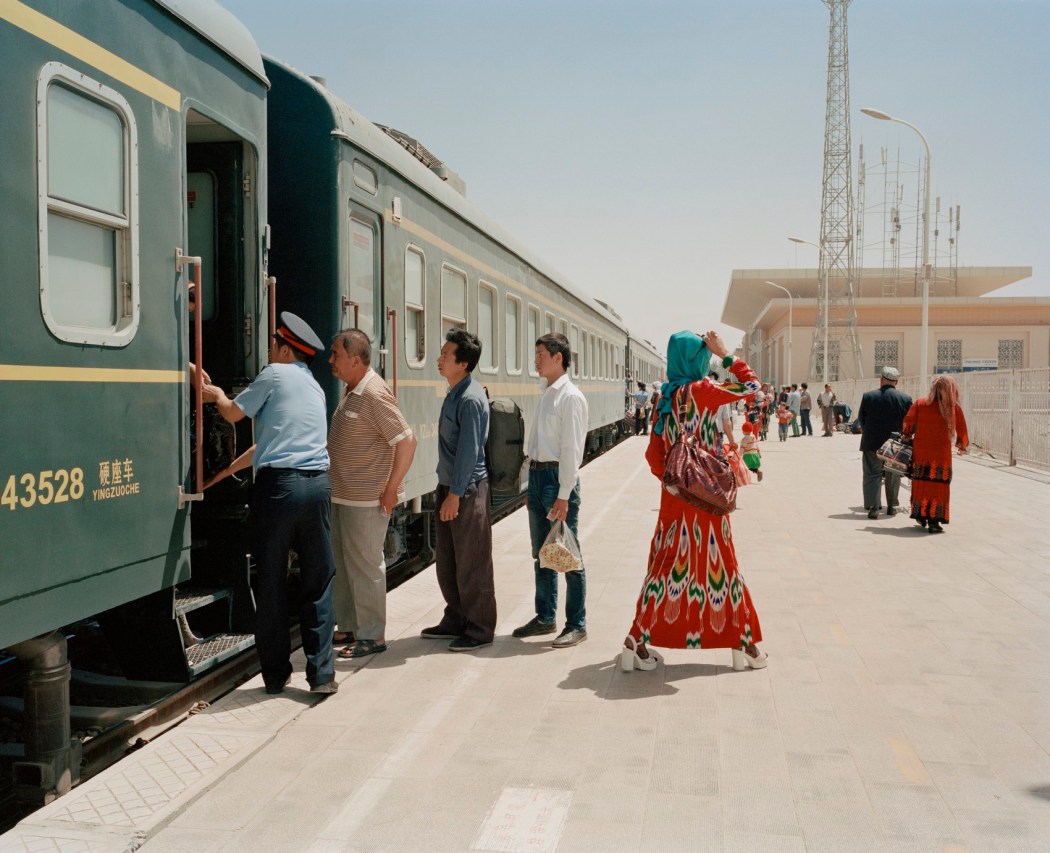
In 2016, rights groups raised the alarm over reports of Beijing-led mass surveillance and human rights abuses against Uyghur Muslims and other ethnic minorities in Xinjiang, where the groups have lived for centuries.
A series of news reports since suggest a systematic, state-led attempt to erase Uyghur culture through mass internment and other forms of control. Allegations of forced labour, sterilisations and abortions, sexual abuse and separated families have also emerged from the Uyghur diaspora.
The reports have prompted the US, as well as the Canadian and UK parliaments to accuse Beijing of “genocide,” a claim China fiercely denies.
Instead, it says the camps are “vocational training centres” necessary to provide employment and to erase extremism in the region.
Photographing Xinjiang
Wack, a self-taught photographer who built his professional career in China, did not set out to document Beijing’s treatment of the Uyghurs when he embarked on his first project in Xinjiang in 2016. He envisaged it as an artistic endeavour to mark the end of a decade living in China.
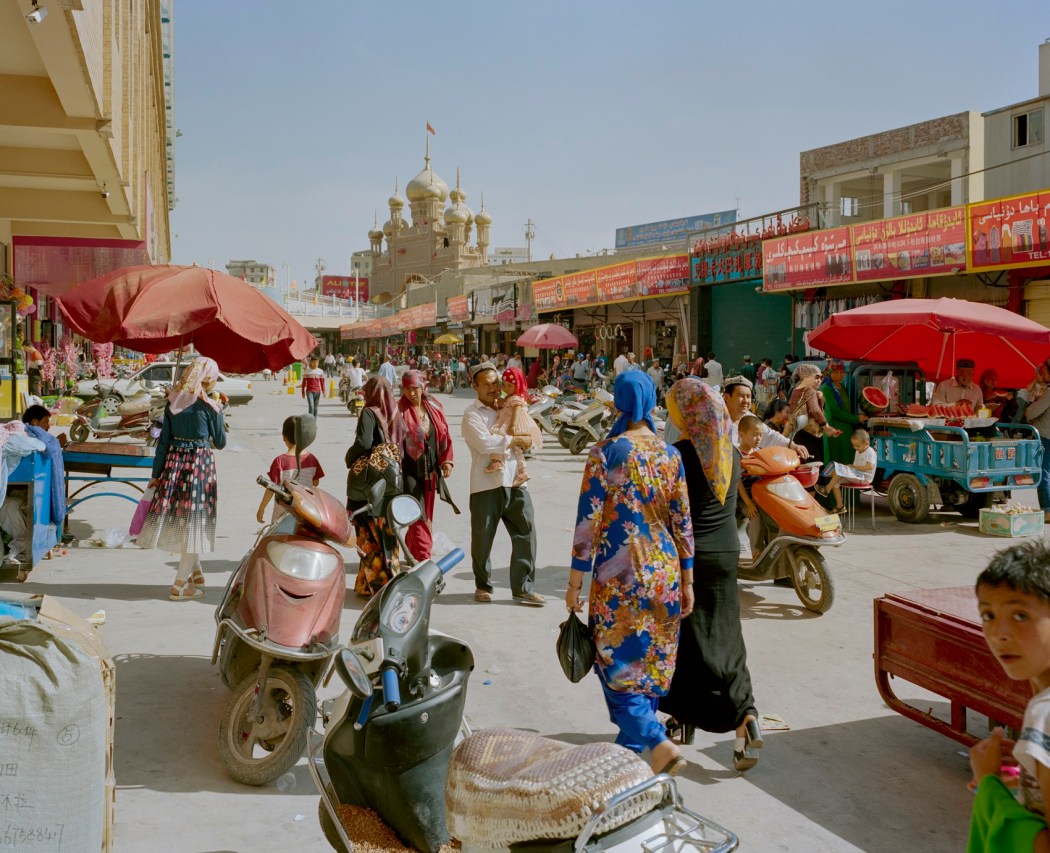
“Originally, I just wanted to document a part of China that looked nothing like China,” he told HKFP. “It was the start of the Belt and Road Initiative, the new Silk Roads, and the need of China for hydrocarbons, gas and ore, so for me it was the dream project.”
He made trips to the region over the course of 12 months, capturing life on the streets of Hotan and Kashgar, the cotton fields of Luntai county, and the commercial oil rigs in the Taklamakan desert.
Wack’s images from 2016 and 2017, a collection called Out West, show vibrant streets filled with Uyghur people in bright traditional clothing. One image shows rows of Uyghur men praying at a mosque.

The photographer had no clue those trips would be the last time he would bear witness to a thriving Muslim culture in the region. “While finishing this first project in 2017, I was – without yet knowing it – photographing the end of an era and the night falling on a region and its people,” Wack wrote in the removed Kodak post.
But even back then, he witnessed a strong police presence and a stark contrast between the treatment of Uyghurs and Han Chinese in the region.
“Everywhere, you would see the oil industry… there were never, ever Uyghur people involved in it,” he told HKFP. “They were all Han Chinese people from the east of China, but people working in the cotton fields were only Uyghur people. It really looked like there was some kind of segregation.”
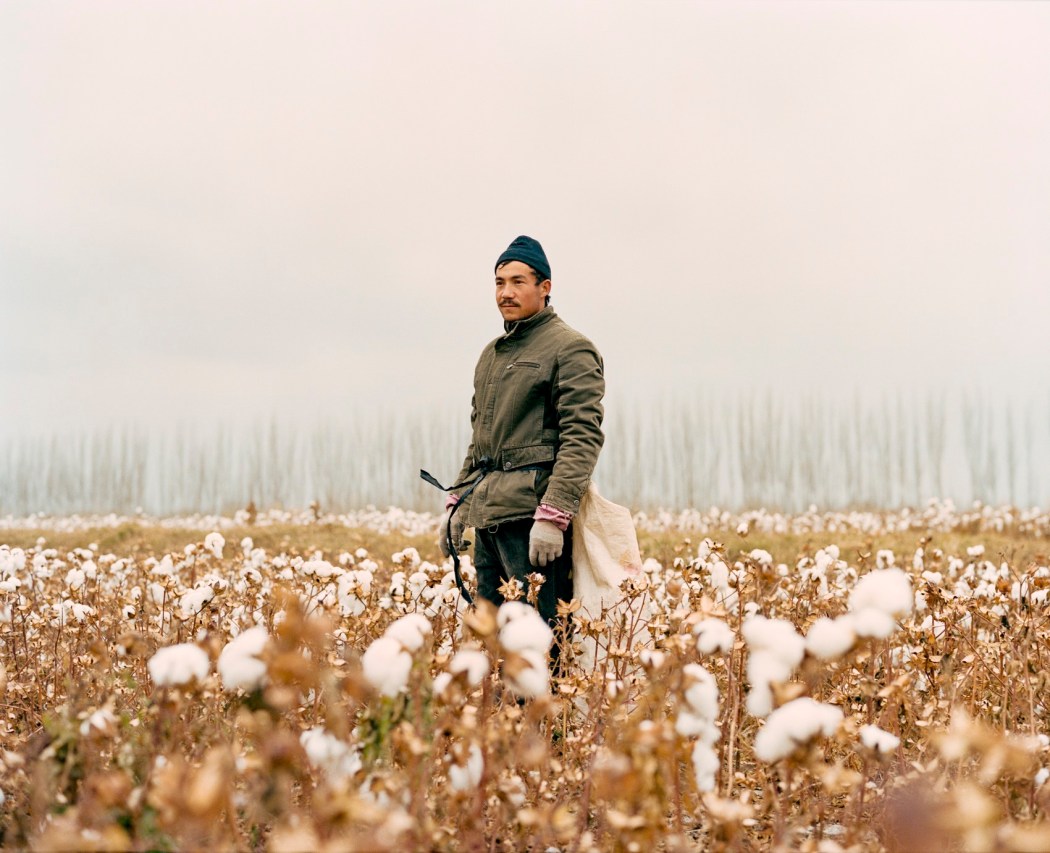
“Han Chinese people had access to the good industries and Uyghur people were being used as cheap labour to pick cotton,” he said, adding that strong police control and regular checkpoints across the region only checked the identities of Uyghur people and not the Han Chinese.
“It seemed like a place under martial law.”
After he concluded Out West, pictures of wide-scale mass internment facilities in the region in 2018 prompted him to return for another project, The Night is Thick.
“I thought my project was finished in 2018. But then I read the articles about… massive incarceration, I couldn’t fucking believe it. I was horrified. I thought I need to update my work,” Wack told HKFP.
‘Orwellian dystopia’
“In Xinjiang, there is what we see, what we want to see, what we are shown, and then there is everything that is hidden from view,” writes Le Monde’s veteran China correspondent Brice Pedroletti in an essay in Wack’s photography book.

Wack told HKFP he saw camp structures but was barred from taking pictures by heavy police presence. “That was not really the point of the photography trip. There was no point of me taking pictures of the camps. We know the camps are there, we know how it looks,” he said, referring to existing images on newswires.
What Wack was interested in was how the city’s streets had changed.
In 2019, Wack travelled to several cities in the region, including Urumqi, Kashgar and Hotun. He had also planned to photograph Yarkant county but was detained on arrival and forced to leave.

But the images Wack did capture are telling. Streets are lined with China’s five-starred red flags. Uyghur men cover their heads with flat caps instead of religious skullcaps.
“I had left a territory under surveillance only to return to find an open-air prison,” Wack wrote of his return to Xinjiang in his preface to Dust.
“It shows the change in the landscape,” Wack told HKFP. “Mosques were closed or destroyed, women were not wearing veils anymore, anything remotely Muslim or middle-eastern had been removed. In two years, the region didn’t look the same anymore.”
On Instagram, Wack has described the changes on the ground as “an abrupt descent into an Orwellian dystopia.”

“Uyghur villages seemed uninhabited and bouquets of surveillance cameras had blossomed everywhere,” the photographer wrote in his preface.
One image stays with him the most. A Uyghur woman, unveiled, staring into his lens with her ID pressed to her chin. She is waiting in a line that stretches beyond the camera’s focus to pass through a police checkpoint and enter a bazaar in Hotan.
“Imagine having to do this ten times a day, just to go shopping, or work, or anywhere,” Wack said.
‘Two-fold reality’
Another shift in the landscape which Wack tried to document was the influx of Han Chinese tourists. “While they are doing this cultural genocide, they have millions of tourists coming to enjoy this kind of ‘Disneyland’ version of Xinjiang,” he told HKFP.
Beijing has invested heavily in domestic tourism in Xinjiang, expecting to double the number of visitors from other parts of China from 200 million this year to 400 million by 2025, according to Reuters.

“The central government is really pushing tourism in the region to show everyone that it’s now secure and beautiful. There’s nothing bad happening, look at all these Uyghur people dancing and cooking lamb skewers,” the photographer said.
This staged and state-manicured celebration of Uyghur culture, what Wack calls “ethno-theme parks,” runs parallel to the internment facilities where Uyghurs are being “re-educated” and made to unlearn this very culture mere kilometres away.
“You have this twofold reality in Xinjiang where there are busloads of Chinese tourists… taking camel rides in the desert, and enjoying the dancers and the food, having access to this kind of local folklore,” he said.
“And at the same time, they’re putting people in camps to really destroy the nature of their culture and religion… to diffuse and disintegrate this Uyghur culture,” he said.
“There’s something very perverse about this. “
‘Dust’
Wack titled his upcoming book Dust in a nod to the deserts of Xinjiang and also the idea of destruction and loss. “There is this idea of how you feel in Xinjiang when you always had sand and dust in your eyes, but also that something that is being destroyed and returned to dust,” he said.

The book, a collection of 71 images spanning four years, is interspersed with text written by academics Dru Gladney and Rémi Castets, as well as veteran China correspondent Pedroletti . It will be published by André Frère Éditions in October.
For Wack, despite his numerous trips to Xinjiang, the images still fall short of the magnitude of what he was trying to capture.
“In some way, my work is also an admission of being a little bit powerless as a photographer trying to document something like this,” he said. “There’s nothing really that you can photograph. You’re trying to create a narrative and document something while still not really having access to it.”

The Kodak Instagram row also attracted the attention of Chinese state newspaper the Global Times, which frequently bristles at reports of Uyghur mistreatment. It ran an article accusing Wack of “hyping” the Xinjiang issue to “make more money.”
It’s an accusation Wack finds laughable. “When you make a photobook, the best thing that can happen is that you don’t lose money.”
“This article is kind of funny,” he said. “All of the journalists that I know, they tell me, ‘You have an article in the Global Times, that’s like a badge of honour, it means you’re doing something right’.”

“I just wished that the article was about my book and my work there, and not about a stupid Instagram post.”
After drawing fire from the newspaper, Wack is unsure whether he will be allowed to return to China, a country where he spent over a decade of his life.
But he has no regrets. “I would do everything the same way.”
Support HKFP | Policies & Ethics | Error/typo? | Contact Us | Newsletter | Transparency & Annual Report | Apps
Help safeguard press freedom & keep HKFP free for all readers by supporting our team

LATEST FROM HKFP
HKFP has an impartial stance, transparent funding, and balanced coverage guided by an Ethics Code and Corrections Policy.
Support press freedom & help us surpass 1,000 monthly Patrons: 100% independent, governed by an ethics code & not-for-profit.






